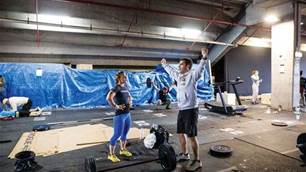A couple of sessions with your physio early on in your training program can help you stay injury free and maximise the effects of your training.
Getting ready for your first five km race or about to push out another marathon? No matter what your running goals are, your physio can play an important role in getting you across the finish line.
Running is an increasingly popular way to stay fit, meet with like-minded people and iron out the day’s stresses; you can’t move for reading about new developments in race strategies, training, shoe types and gym based strength programs to improve effectiveness.

Unfortunately, amidst all the hype, it’s easy to lose focus on the basics. The latest shoes might help you look and feel the part; but working on an effective running style will help you feel great and stay injury free.
It does not matter whether you are a middle distance runner, a sprinter, in it to just make it, or looking to win, learning to run properly will help you stay injury free and make you a more efficient runner. Working with your physio to iron out any troublesome mechanics in your running style may help improve your time and keep you primed for the running season.
To improve running fitness and adapt to the stress and load of running, you need a training program which incorporates progressively higher running volumes. Improvements to your style and times are achieved through planned and graduated increases in load. with strategically placed recovery and strengthening programs. Your physio is ideally placed to work with you and/or your coach to help identify and manipulate your program to ensure that your training does not contribute to injury, fatigue and burnout.
While many people turn to their physio only when injury strikes, the reality is a couple of sessions with your physio early on in your training program can help you stay injury free and maximise the effects of your training.
How to get the most from your physio
You can use your physio for pre-hab to identify and address any weakness in your running biomechanics. Any subtle muscle imbalances or poor recruitment patterns can be identified early and mitigated against; before the long kilometres and fatigue take their toll.
Using an anatomical approach, your physio will focus on the quality and function of your joints, muscles, tendons and so forth. They examine joint ranges, muscle imbalances and tissue quality. Testing may expose injuries or induce abhorrent responses; taping, orthososes or simulated muscle activation techniques can then be used to correct an underlying deficit.
Another approach is what is known as a pathoemchanical analysis. This involves examining your running mechanics to identify faults and then minimising their impact or eliminating them by learning to run again.

Mind matters
In the past 10 years there has been a lot of excitement about neuroplasticity, the way the brain changes how it works through the application of external stimulus. Repeated drills and movement patterns result in cortical reorganisation; put quite simply, in the case of runners, this is the development and reinforcement of a correct and efficient motor pattern in your running gait.
Your physio is trained in running gait analysis and can identify any underlying biomechanics issues. They can work with you on correction strategies, and incorporate them into running drills and your training; effectively teaching you the skill of running.
So, if you are thinking of doing fun run, have a plan that it is not quite working or are an experienced athlete looking for something more to improve your running economy, then it is worth talking with your physio today.
Nathan Sculthorpe is a physiotherapist with an interest in Biomechanics and the prevention of sports related injuries, particularly multisport and endurance events.
Follow Nathan on Twitter at: @nayscully
Related Articles

I was not born to run

WATCH AND LEARN: How to throw the perfect javelin













